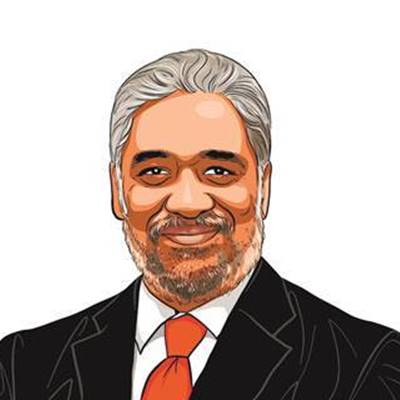Opinion Clintons pivot
Last month,it was US Defence Secretary Leon Panetta who generated political ripples by detailing US plans to shift the weight of its powerful military to Asia
Clintons pivot
Last month,it was US Defence Secretary Leon Panetta who generated political ripples by detailing US plans to shift the weight of its powerful military to Asia in a speech at the annual Shangri-La Dialogue in Singapore.
This week,US Secretary of State Hillary Clinton continues Americas intense new engagement with Asia. Clinton joins the annual ministerial deliberations of the Association of Southeast Asian Nations (ASEAN) in Phnom Penh and travels elsewhere in the region.
If Panetta rattled the sabre,Clinton wants to soften the blow by telling Asian nations that there is more to US regional strategy than a muscular military response to the rise of Chinese power.
Clintons message to the ASEAN leaders,who are deeply concerned about the prospect of a new military confrontation between the US and China,is that Washington wants to build a durable partnership with Beijing and has no intention of going to war.
Second,Clinton is also responding to the criticism that the US pivot to Asia,announced with much fanfare by the Obama administration last year,does not have enough economic content.
For decades the principal economic partner of the region,Americas regional commercial profile has been overtaken by that of a rising China. If US trade with ASEAN stands at around $200 billion,Chinas trade with the regional grouping is nearly $300 bn. For the US,too,China is the biggest trading partner with bilateral commerce standing at around $500 bn.
While the US cannot change Chinas geographic centrality in East Asia,Clinton wants to stress Washingtons political commitment to deepen trade and economic cooperation with the region.
In what could be her last tour of Asia as secretary of state,Clinton has reasons to be pleased with her record of putting Southeast Asia at the top of American diplomatic priorities and breathing new life into the US strategy towards the region.
Circling China
China,however,is unlikely to view Clintons Asia tour as a benign diplomatic outreach. One look at Clintons current itinerary will be enough to convince Beijing of her strategic intentions.
On her way to Southeast Asia,Clinton stopped over in Mongolia,which is Chinas sensitive neighbour to the north. Ulan Bator has been reaching out to Washington as part of its effort to gain some breathing space from China.
From Mongolia,Clinton travelled to Hanoi,which is locked in a deepening territorial conflict with Beijing in the South China Sea. Before joining the ASEAN events in Phnom Penh,Clinton has arrived in Laos.
This is the first visit by a US secretary of state to Laos in 57 years. Both Cambodia and Laos have widely been seen in Asia as slipping into the Chinese orbit. Beijing,however,would view Clintons bilateral talks in Phnom Penh and Vientiane as an attempt to pull Cambodia and Laos away from China.
China would recall that Panetta had travelled from Singapore last month to Vietnam and expressed interest in regaining access to a military facility at Da Nang on the South China Sea coast.
From Vietnam,Panetta travelled to New Delhi to declare that India is the lynchpin of the new US military strategy in Asia. Beijing does not have to be paranoid to see a pattern in Americas new engagement with Asia.
Mekong Play
During her visit to the region,Clinton will announce plans to boost the Lower Mekong Initiative that she launched three years ago. The LMI provides a minilateral framework for cooperation between the US and the four lower riparian states of the Mekong: Laos,Thailand,Cambodia and Vietnam.
The Mekong originates in Tibet and flows for hundreds of kilometres in China before entering Southeast Asia. Clintons aim was to enhance cooperation in the areas of environment,health,education and infrastructure development. Since then,the five countries have sought to strengthen cooperation in these areas and build on their common interests.
The LMI,not surprisingly,is also a vehicle for expanding American influence in a region that is also vital to China. It also puts Washington in the middle of the growing disputes involving China and the lower riparian states.
Well before Washington rediscovered the geopolitics of the Mekong,the NDA government in 2000 had taken the lead to promote Indias cooperation with the lower Mekong region. Under UPA 2,though,the Mekong-Ganga initiative appears to have fallen off the list of Delhis priorities.
The writer is a distinguished fellow at the Observer Research Foundation,Delhi


